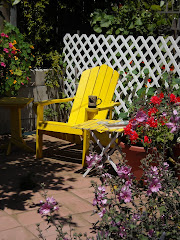And Now, From The Department of Bwa-hahahah.
This from the Nov 11th New York Times. It’s long but truly wonderful! America! Doncha love it! And in Mormon Utah, who ya calling strange and odd and offensive nonsense?? Ah, the perils and pitfalls of mixing church and state.
From Tiny Sect, Weighty Issue for Justices
By Adam Liptak
PLEASANT GROVE CITY, Utah . Across the street from City Hall here sits a small park with about a dozen donated buildings and objects , a wishing well, a millstone from the city’s first flour mill and an imposing red granite monument inscribed with the Ten Commandments.
Thirty miles to the north, in Salt Lake City, adherents of a religion called Summum gather in a wood and metal pyramid hard by Interstate 15 to meditate on their Seven Aphorisms, fortified by an alcoholic sacramental nectar they produce and surrounded by mummified animals.
In 2003, the president of the Summum church wrote to the mayor here with a proposal: the church wanted to erect a monument inscribed with the Seven Aphorisms in the city park, similar in size and nature to the one devoted to the Ten Commandments.
The city declined, a lawsuit followed and a federal appeals court ruled that the First Amendment required the city to display the Summum monument. The Supreme Court on Wednesday will hear arguments in the case, which could produce the most important free speech decision of the term.
The justices will consider whether a public park open to some donations must accept others as well. In cases involving speeches and leaflets, the courts have generally said that public parks are public forums where the government cannot discriminate among speakers on the basis of what they propose to say. The question of how donated objects should be treated is, however, an open one.
Inside the pyramid, sitting on a comfortable white couch near a mummified Doberman named Butch, Ron Temu, a Summum counselor, said the two monuments would complement each other.
“They’ve put a basically Judeo-Christian religious text in the park, which we think is great, because people should be exposed to it,”Mr. Temu said. “But our principles should be exposed as well.”
Su Menu, the church’s president, agreed. “If you look at them side by side,” Ms. Menu said of the two monuments, “they really are saying similar things.”
The Third Commandment: Thou shalt not take the name of the Lord thy God in vain.
The Third Aphorism: Nothing rests; everything moves; everything vibrates.
Michael W. Daniels, the mayor here, is not the vibrating sort.
Sitting with the city attorney in a conference room in City Hall, Mr. Daniels deftly drew several fine lines in explaining why the city could treat the two monuments differently.
“Only donations concerning the citys history are eligible for display in the park as a matter of longstanding policy,” he said, and only when donated by groups with a long association with the city. The Fraternal Order of Eagles, a national civic organization, donated the Ten Commandments monument in 1971.
“The donations,” Mr. Daniels went on, “are transformed when the city accepts them. Monuments on government property become government speech,” he said.
Under the First Amendment, the government can generally say what it likes without giving equal time to opposing views; it has much less latitude to choose among private speakers.
Asked what the government is saying when it displays the Ten Commandments, Mr. Daniels talked about law and history. He did not mention religion.
Pressed a little, he retreated.
“The fact that we own the monument doesn’t mean that what is on the monument is something we are espousing, promoting, establishing, embracing,” Mr. Daniels said. “We’re looking at, Does it fit with the heritage of the people of this area?”
Brian M. Barnard, a lawyer for the Summum church, said the city’s distinctions were cooked up after the fact as a way to reject his client’s monument. “The local chapter of the Eagles, “Mr. Barnard added, “had only been in town two years when it donated the Ten Commandments monument.”
“We have a city that will allow one organization to put up its religious ideals and principles,” Mr. Barnard said. “When the next group comes along, they won’t allow it to put up its religious ideals and principles.”
Last year, the federal appeals court in Denver sided with the Summum church and ordered Pleasant Grove City to erect its monument.
Although the case appears to present questions under the First Amendment’s ban on government establishment of religion, the appeals court said the case was properly analyzed under the amendment’s free-speech protections. That distinguishes it from most cases concerning the display of nativity scenes and the like on government property.
The city, supported by more than 20 cities and states, along with the federal government, has told the Supreme Court that the upshot of affirming the appeals court decision would be to clutter public parks across the nation with offensive nonsense.
“A town accepting a Sept. 11 memorial would also have to display a donated tribute to Al Qaeda,” the briefs said. “Accepting a Statue of Liberty,” the city’s brief said, “should not compel a government to accept a Statue of Tyranny.”
The brief for the Summum church said the relevant dispute was much narrower. “The government,” it said, “may not take sides in a theological debate.”
“Governments seeking to avoid accepting donations they do not want have several options,” the Summum brief contended.” They can choose to display nothing. They can speak in their own voice by creating or commissioning their own monuments. And they can adopt the messages conveyed by donated monuments as their own, but only if they do so expressly and unequivocally.”
The Ten Commandments monument here stands in Pioneer Park, which pays tribute to the city’s frontier heritage, one that is mostly Mormon. The two sides differ about how best to honor that heritage.
Mayor Daniels said the monument broadly reflected local history. Mr. Barnard, the Summum lawyer, said the Ten Commandments did not play a central role in the Mormon faith.” If they wanted to quote from the Book of Mormon,” he said, “that would, at least, relate to the pioneers.”
“Mormons came to Utah because of religious persecution,” Mr. Barnard added.” The pioneer heritage in Utah has to be escape from persecution.”
The Summum church was founded in 1975, and it contains elements of Egyptian faiths and Gnostic Christianity. Summum, derived from the Latin, refers to the sum of all creation.
Followers of Summum believe that Moses received two sets of tablets on Mount Sinai and that the Ten Commandments were on the second set. The aphorisms were on the first one.
When Moses came down from the mountain the first time, he brought the principles of creation, Mr. Temu said. But he saw the people weren’t ready for them, so he threw them on the ground and destroyed them.
Summum’s founder, Corky Ra, says he learned the aphorisms during a series of telepathic encounters with divine beings he called Summa Individuals.
Mr. Barnard has represented the Summum church for many years. “They’re odd,” he said of his clients, with an affectionate smile. “They’re strange. They’re different.”
Bernie Aua, the church’s vice president, said the court case should not turn on how his religion was viewed.
“We have this thing called the Constitution,” Mr. Aua said. “The fact is, it’s a public park. And public parks are public
Subscribe to:
Post Comments (Atom)












3 comments:
If the park is big enough to allow both monuments without the park goers being cramped, both should be allowed.
Ah, but then some OTHER religious group comes along, then another, then another, and pretty soon the whole park is littered with hundreds of monuments to each sect and group, all clammoring to be heard, a sort of Hyde Park Corner but with stone/metal monuments instead of people yelling and waving. From sea to shinning sea . . . . it's a can of worms.
That's fine until things become so cluttered that someone has to say "nope, no room ... but if you want to put your thingee in another park, there's one down the road."
Seriously, there's not gonna be hundreds of monuments.
It is far better to allow everyone their right to free expression than it is to prevent all groups from voicing their opinions.
Post a Comment